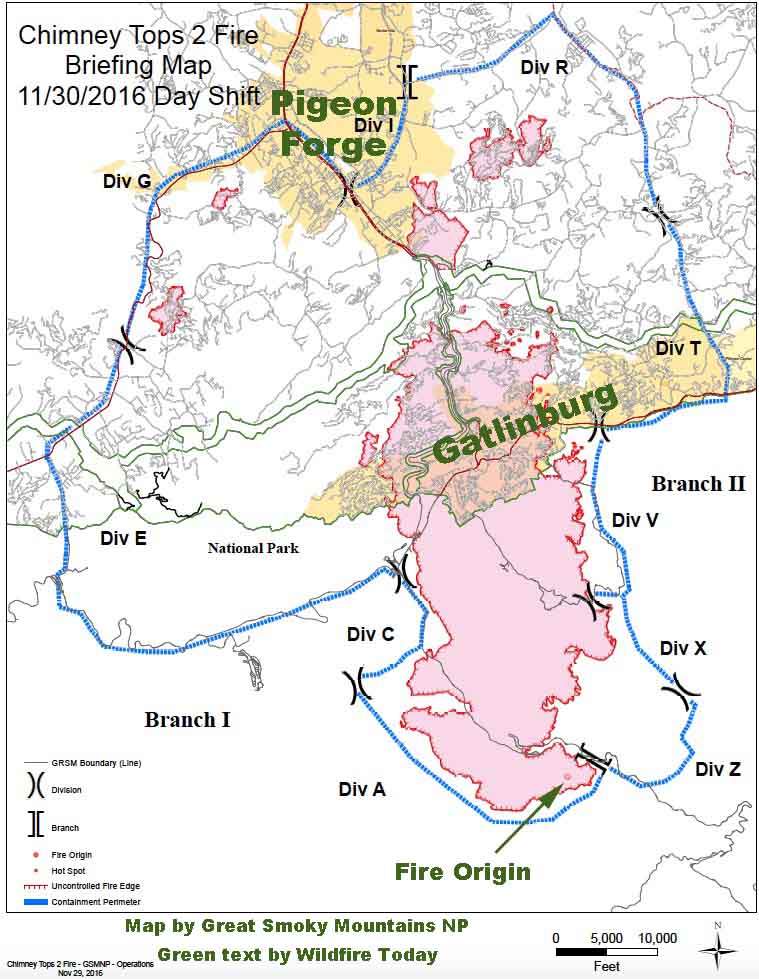Above: Map showing the perimeter of the Chimney Tops 2 Fire at Gatlinburg, Tennessee as of 11 p.m. ET December 1, 2016.
(UPDATED at 4:12 p.m. ET, December 2, 2016)
Today for the first time since Gatlinburg was evacuated residents will be allowed into the city to access their property. They can enter the area between 10 a.m. and 5 p.m. today through December 6th.
According to CNN the number of confirmed fatalities has increased to 13:
Of the 13 who died, 12 were killed in the fires, and one person died of a heart attack after fleeing and being exposed to smoke, [Sevier County Mayor Larry] Waters and the county’s assistant medical examiner, Dr. Vincent Tolley, said.
The estimated number of structures destroyed officially remains at 700; it is likely that will change after the surveys are complete.
The Chimney Tops 2 Fire that burned into the city on November 29 has been mapped at 17,859 acres. Firefighting resources assigned to the fire include 17 hand crews, 31 engines, 6 helicopters, and 5 dozers for a total of 458 personnel.
The National Park Service Investigative Branch Services and the Bureau of Alcohol, Tobacco, Firearms and Explosives (ATF) continue to investigate the origin of the fire — it appears to be human caused. The park is asking for assistance from the public to gather information.
For the most current information about the Chimney Tops 2 Fire at Gatlinburg, see our articles tagged “Chimney 2 Fire”.








